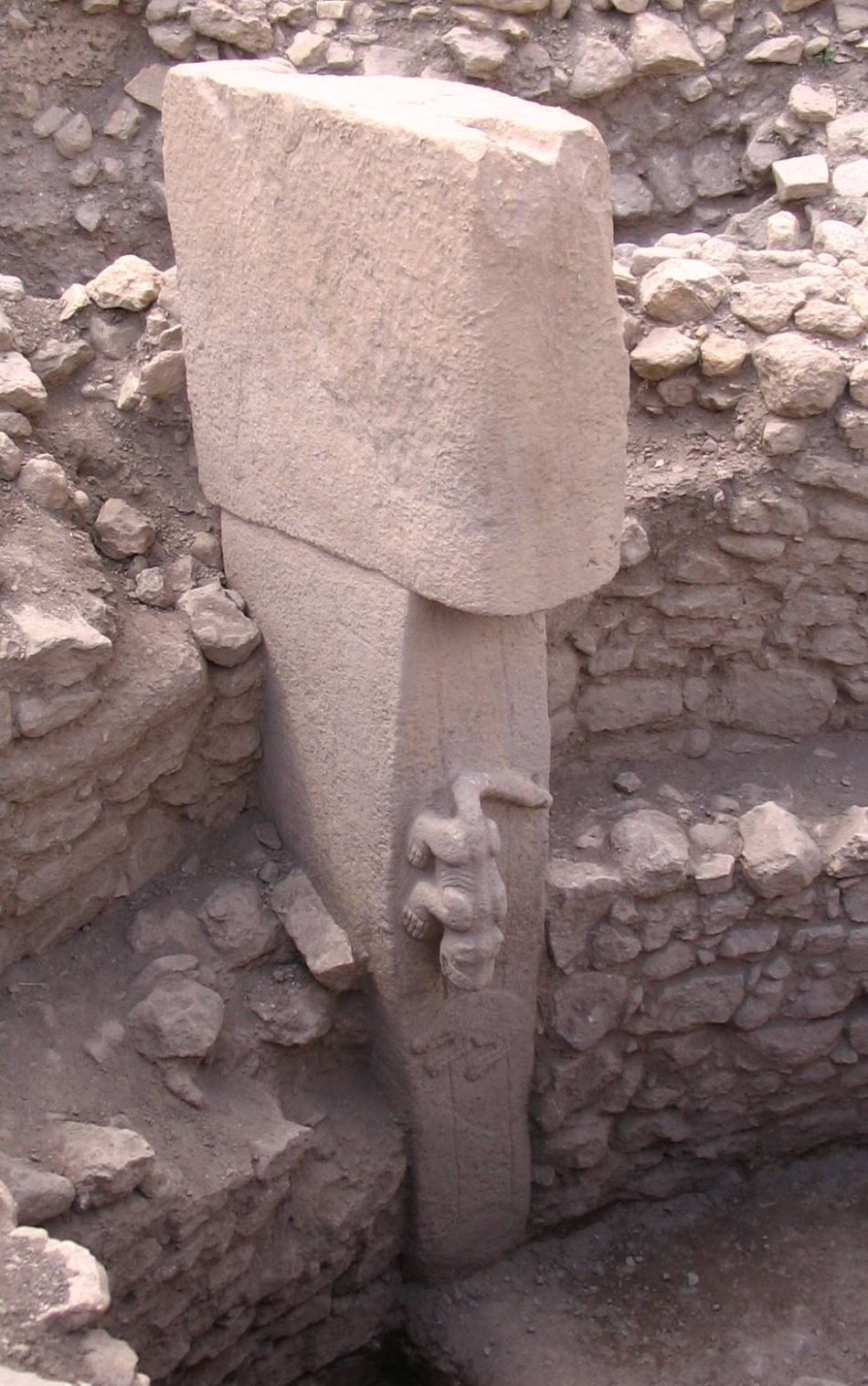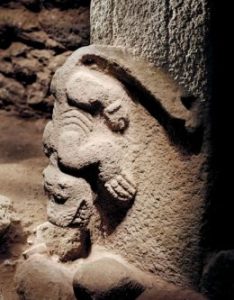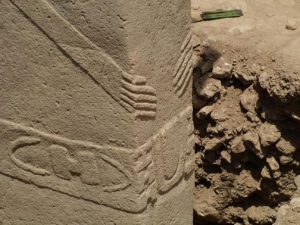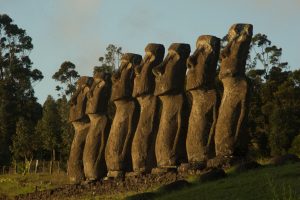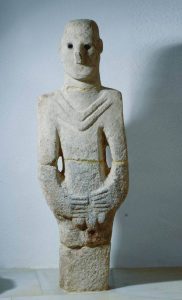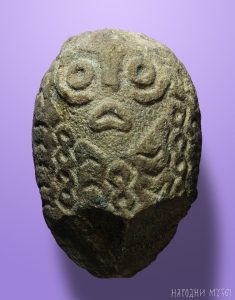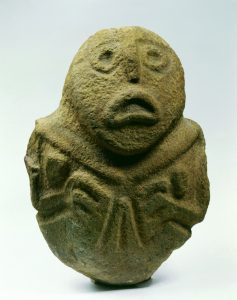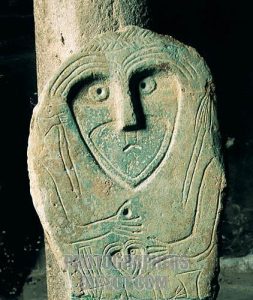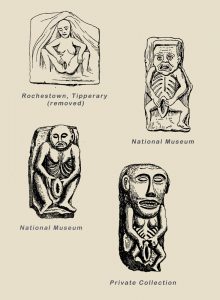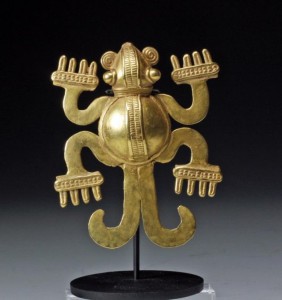Pillar 27 from Enclosure C (Layer III) with the sculpture of a predatory animal, Göbekli Tepe. Public Domain via Wikipedia.
There’s an extensive article from the Smithsonian Magazine covering the discovery, with wonderful photos by Vincent J. Musi / National Geographic:
- A. Curry, “Gobekli Tepe: The World’s First Temple?.”
[Bibtex]@Article{Curry83613665, author = {Curry, Andrew}, title = {Gobekli Tepe: The World’s First Temple?}, journaltitle = {Smithsonian Magazine}, date = {2008-11-19}, titleaddon = {Smithsonian}, url = {http://www.smithsonianmag.com/history/gobekli-tepe-the-worlds-first-temple-83613665/}, urldate = {2016-08-17}, abstract = {Predating Stonehenge by 6,000 years, Turkey's stunning Gobekli Tepe upends the conventional view of the rise of civilization. Andrew Curry is a Berlin-based journalist who writes about science and history for a variety of publications, including National Geographic, Nature, and Wired. He is a contributing editor at Archaeology and has visited archaeological excavations on five continents.}, file = {Snapshot:/home/trismegisto/.mozilla/firefox/o3a71e7j.default/zotero/storage/IPIR89MG/gobekli-tepe-the-worlds-first-temple-83613665.html:text/html}, owner = {trismegisto}, shorttitle = {Gobekli Tepe}, timestamp = {2016-08-17}, }
Here’s some fragments (emphasis mine):
As we walk among them, I see that some are blank, while others are elaborately carved: foxes, lions, scorpions and vultures abound, twisting and crawling on the pillars’ broad sides.
(…) The archaeologists did find evidence of tool use, including stone hammers and blades. And because those artifacts closely resemble others from nearby sites previously carbon-dated to about 9000 B.C., Schmidt and co-workers estimate that Gobekli Tepe’s stone structures are the same age. Limited carbon dating undertaken by Schmidt at the site confirms this assessment.
(…) To Schmidt and others, these new findings suggest a novel theory of civilization. Scholars have long believed that only after people learned to farm and live in settled communities did they have the time, organization and resources to construct temples and support complicated social structures. But Schmidt argues it was the other way around: the extensive, coordinated effort to build the monoliths literally laid the groundwork for the development of complex societies.
(…)
What was so important to these early people that they gathered to build (and bury) the stone rings? The gulf that separates us from Gobekli Tepe’s builders is almost unimaginable. Indeed, though I stood among the looming megaliths eager to take in their meaning, they didn’t speak to me. They were utterly foreign, placed there by people who saw the world in a way I will never comprehend. There are no sources to explain what the symbols might mean. Schmidt agrees. “We’re 6,000 years before the invention of writing here,” he says.
“There’s more time between Gobekli Tepe and the Sumerian clay tablets [etched in 3300 B.C.] than from Sumer to today,” says Gary Rollefson, an archaeologist at Whitman College in Walla Walla, Washington, who is familiar with Schmidt’s work. “Trying to pick out symbolism from prehistoric context is an exercise in futility.”
I’ll show other details of this temple, plus other figures from elsewhere that share some morphological features (including the little hands of the moai). I include a reptile descending the “ladder to heaven” of an alchemical illustration just to remember that many mythologies feature creatures both climbing and descending the tree of life or pillar of heaven. Serpents, dragons, arachnidae and whatnot.

